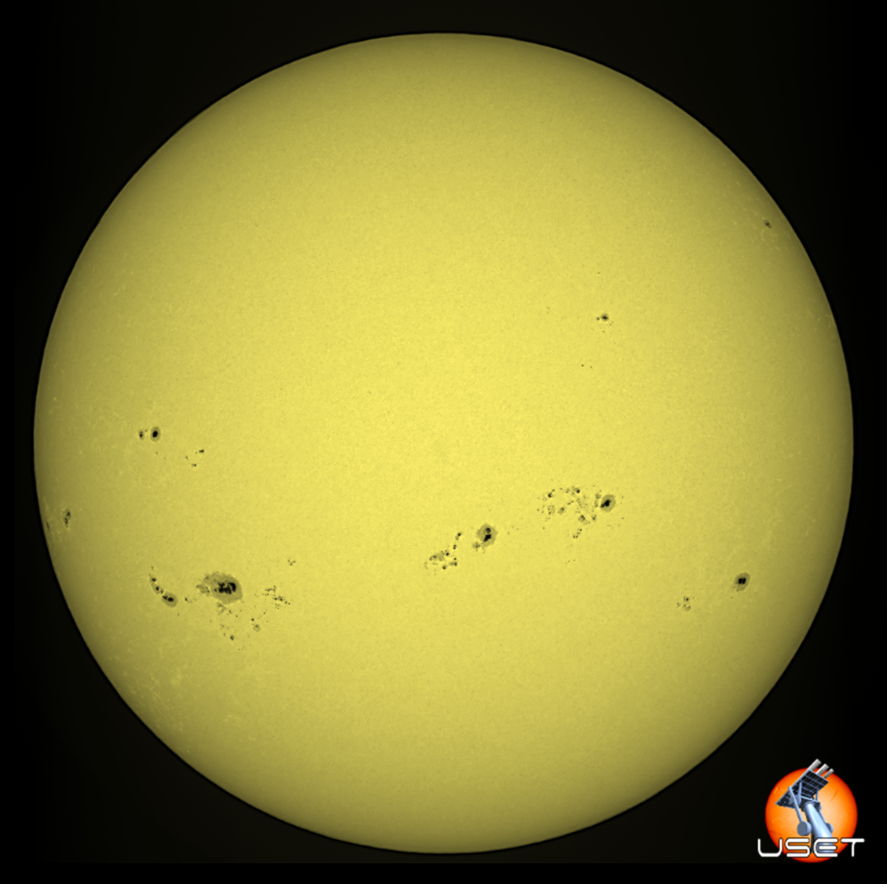The Sun has been very active during the last few months. Since April this year, many large and complex sunspot groups have adorned the solar disk driving the daily sunspot number regularly to well above 250 (see the SIDC/USET image for 7 August underneath). These active regions often were the source of strong solar flares, and the associated solar eruptions -if earth-directed- eventually would rattle the Earth’s magnetic field. The majestic aurorae thus created were sometimes visible from countries further away from the polar regions, such as in May this year when the colorful display was also visible from Belgium (see this newsitem). Is all this happening because we are close to the maximum of the current solar cycle?

The first question that we need to answer is how the actual value of the maximum of a solar cycle is computed. In order to assess the minima and maxima of the solar cycle, we use what we call the monthly smoothed sunspot number. That is basically an averaging of monthly mean values over 13 months, from 6 months before to 6 months after a base month. According to this quantity, the value of the monthly smoothed sunspot number for the current month (September 2024) will only be known in April next year.
In 2019, the Solar Cycle Prediction Panel -a team of scientists from all over the world- convened to gather and combine predictions for the (at that time) still infant Solar Cycle 25. The results of this gathering were published shortly thereafter: the Solar Cycle Prediction Panel expected the cycle maximum value of the smoothed monthly sunspot number to be between 105-125 (a narrow range!) with the peak occurring between November 2024 and March 2026.
So, five years later, where are we now with respect to the progress of this solar cycle? The most recent value computed for this monthly smoothed sunspot number is for February 2024 and it amounts to 137, which is already and clearly outside of the uncertainty range published in 2019, and -more importantly- it is still on the rise.

In terms of prediction accuracy, the closer we are to the actual maximum, the more the various prediction methods will converge. At this point in the solar cycle, the WDC SILSO predicts a maximum between 138 and 161 that would take place sometime between May and October 2024 (graph underneath) , while NOAA is now predicting a similar range between 137 and 164 but within a broader time window between February 2024 and January 2025. The website of the SIDC/SILSO provides you a front row seat to watch the further unfolding of this story to its climax!